American Indians 🏹
American Indians
American Indians or Amerindians are not to be confused with the inhabitants of India, as did Christopher Columbus.
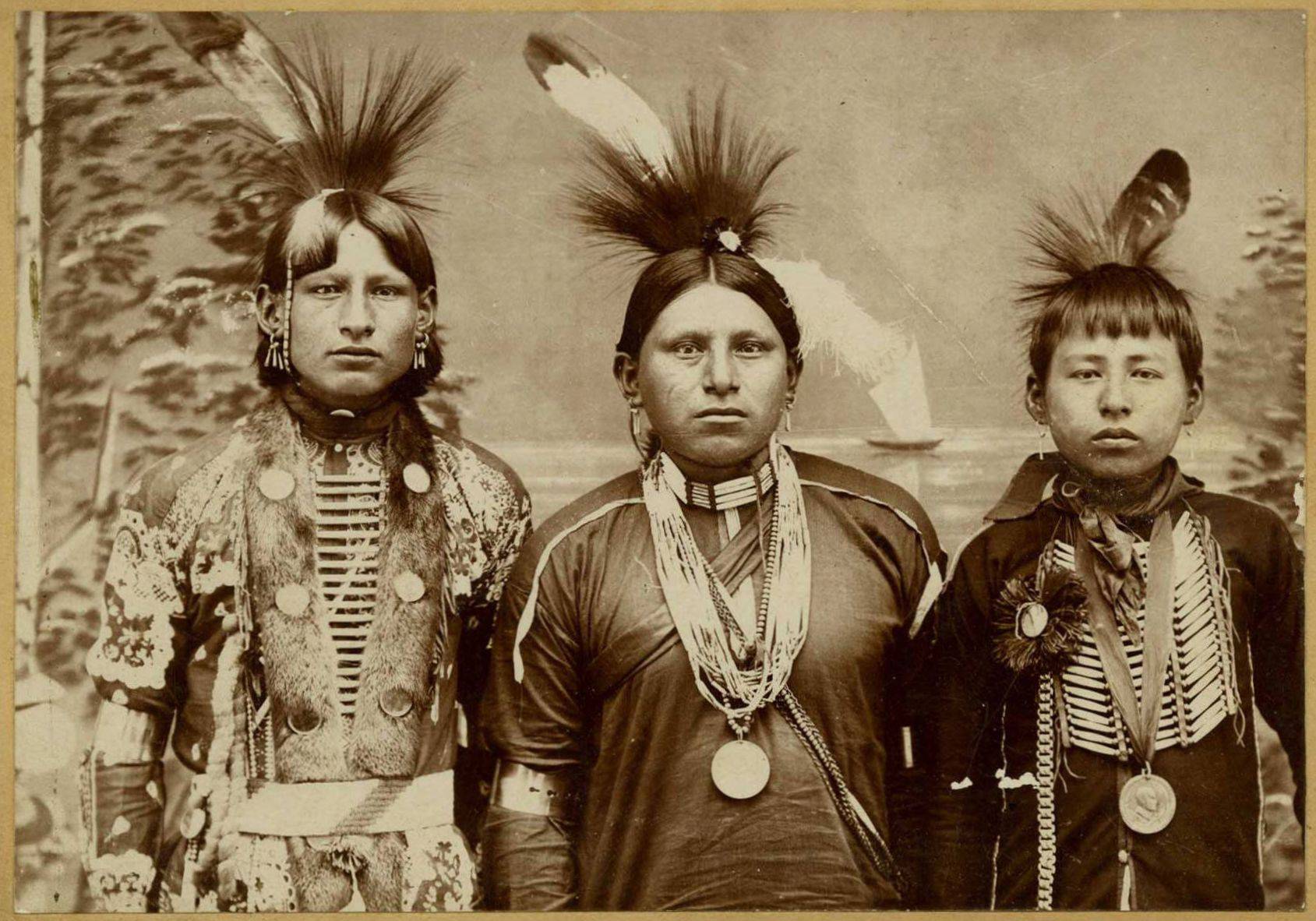
The Amerindians are the first occupants of the American continent.
When the explorer Christopher Columbus thought he had reached the East Indies in 1492 when he had just landed in America, he named the men he discovered there.
Because of this error, we continue to use the word Indians to speak of the New World populations.
Sometimes the terms "first nations" or "first peoples" are used. The name "redskins" is frowned upon nowadays, it is no longer used in the United States where we prefer the terms "Native Americans", "First Nations" or "Indigenous Peoples of America" but none of them. is truly satisfying because of the diversity of these peoples and because they reject them and prefer to use their ethnic or tribal name.
In the sixteenth century, with the arrival of Europeans in North America, there were significant repercussions on the Amerindians. Indeed, their numbers collapsed because of diseases, wars and the ill-treatment inflicted upon them.
Their way of life and their culture were thwarted by the advance of the Border and the colonization of the white Americans, they lost the majority of their territory and were forced to integrate reserves.
Their demographic, social and economic situation continued to deteriorate.
Nevertheless, since the 1970s, the Amerindian community has been experiencing a renewal: their population is growing, poverty is slowly declining, traditions are reviving. If the Amerindians are now full citizens, they are still marginalized from American development.
Life and beliefs
Living in symbiosis with their natural environment, Amerindians depend on climatic conditions and natural resources. Each large group has thus developed a favorite activity, with its own know-how.
It is difficult to find their original beliefs because of their great acculturation. Indeed, they were Christianized by European priests from the seventeenth century and the two cultures often merged.
Amerindian religions do not have rigid dogma. If there is a diversity in Indian rites and superstitions, it is still possible to identify some common points that make it possible to understand their spirituality.
Amerindians are animists and conceive the world as a great whole in which natural and supernatural elements coexist. The boundary between the visible world and the spirit world does not exist and beliefs are expressed in every moment of everyday life.
Native Americans honor a unique and creative God called The Great Spirit whose name varies according to language, for example "captain of heaven" for the Apaches or "Gitche Manitou" among the Algonquins.
There are also a multitude of secondary gods, Auxiliary spirits, such as spirits of wind, fire, thunder, ancestors, ...
Their world also has evil creatures like the Wendigo.
Most Native Americans think they have appeared in America coming out of the sea, a lake or a cavity.
Rites
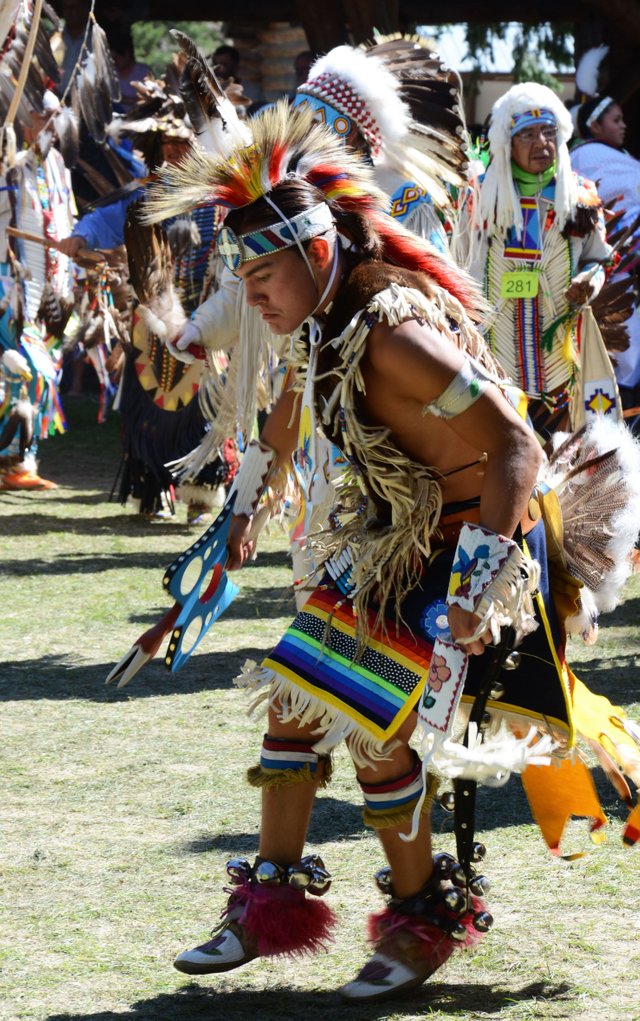
Before prayers or major ceremonies such as hunting, warfare or a transition to adulthood, Native Americans must purify themselves. They use for this purpose the sweat lodge or ritual baths. There are many ways to enter into a trance or to have visions: smoking or burning plants (tobacco, sage, birch bark), fasting or taking drugs.
There are many other rituals to reconcile spirits such as offerings to Mother Earth to grow corn or to the spirit of the animal killed in the hunt.
Dance is also important at the time of the big gatherings. The Dance of Spirits for example brings together participants who repeat couplets to the sound of drums. Their incantations can lead to trance. The Dance of the Sun aims to venerate the day star, during the period of the summer solstice. It is accompanied by voluntary mutilations to show his courage and to enter into a trance.
The Cherokees practice the Rain Dance for their crops to be good.
To perform their dances, Amerindians frequent sites they consider sacred: Bear Butte (South Dakota), Devils Tower (Wyoming), Shiprock (New Mexico) or Enchanted Rock (Texas).
The religious practices are not managed by a clergy like with the Catholics, there is the shaman who is in charge to come into contact with the spirits and to interpret supernatural signs by the observation of the nature, by the dream and the trance and medicine man who heals the sick, he reduces pain by plants or by hypnosis.
Drawings, symbols
For thousands of years, Amerindians have represented shapes and silhouettes on different supports such as walls and rocks, sand, animal skins, objects of everyday life or even on their own body .
These symbols form an esoteric language. The circle is one of the most common: it is found in ritual dances, the shape and layout of tipis or wigwams, in the sun and medicine wheels. It symbolizes the unity and balance of the world, its revival as a cycle.
Each animal and sacred element is represented as a totem that can take various forms. Each clan has its own: the turtle for the Iroquois; the bear for the Mohawks, the pipe for the Cayugas.
Native Americans believe in an existence after death. However, the mortuary rituals are very different from one people to another: in the South-West, the Hopi bury the deceased. In the Great Plains, parents cut their hair or self-harm. On the northwest coast, the dead are placed in mortuary shacks. In the northern plains, bodies are placed on trees or scaffolding to break down in the open air.
For the Amerindians, the Earth is their mother. All that is in nature, whether living or not, participates in the sacred link of life. Each in his own way fulfills his mission. Every natural element, every animal is worthy of respect.
Massacre of the Amerindians

In the sixteenth century, with the arrival of Europeans in North America, there were significant repercussions on the Amerindians. Indeed, their numbers collapsed because of diseases, wars and the ill-treatment inflicted upon them.
Before the arrival of settlers, they were between 2 and 7 million and at the beginning of the twentieth century, they were only 300 000 !!
This extermination is due to unequal wars, repeated massacres and diseases.
Current situation
The Amerindian population grew from just under 500,000 in 1930 to more than 3,000,000 in the United States and Canada in 2000. In 2001, there were some 300 Indian reserves in the United States and about two one thousand five hundred in Canada. But nearly 75% of US Indians and 42% of Canada's Indians live outside, looking for work and better living conditions.
In fact, the unemployment rate on reserves is very high. Amerindians are part of the fourth world if one compares their incomes, life expectancy and education level with national averages.
Reserves are frequently affected by social ills such as alcohol and drug abuse. In the city, Indians can use structured organizations that create self-help networks.
Apart from members of the Indian elite, who hold positions of responsibility, Indian workers often have low wages because of their lack of training and the discrimination they face.
If the economic development of the reserves has become a priority, it is the subject of debate.
Entrepreneurs, Indian and non-Indian, have established companies, creating jobs and investing capital.
In the United States, the business sectors under discussion are casinos, tourism and mineral resource extraction. After the Indian Gaming Regulatory Act voted in 1988 to open casinos in Indian territory, nearly two hundred and eighty casinos were established on reserves.
These have no doubt saved disadvantaged communities, but it has also led to the proliferation of Indian radiation from tribal registers in order to remove them from these new places of profit and to let them selfishly continue to live in poverty.
Famous tribal leaders
Despite the fact that settlers massacred and chased Native Americans from their land, some Indians tried to resist and fought to keep the land of their ancestors. Here are some of these leaders who have done everything so that their people can live in freedom.
Sitting Bull
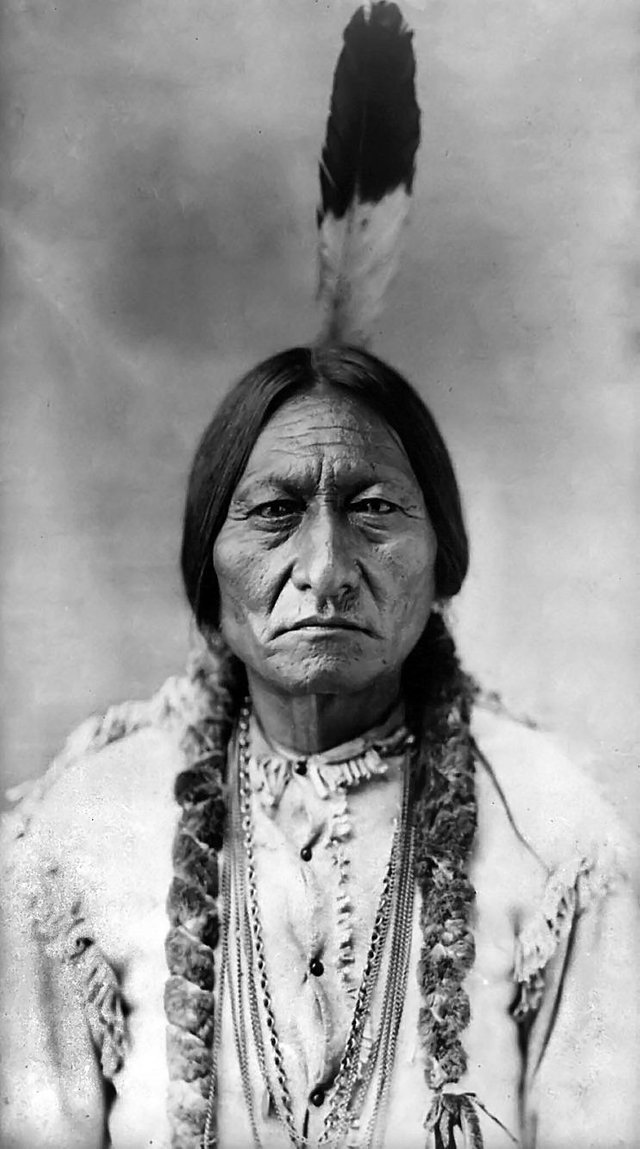
Sitting Bull (bison sitting) is a chief and doctor of Lakotas Hunkpapas, of the Sioux people.
From an early age, he stands out thanks to his physical abilities and his talent in archery.
After his 30 years, Sitting Bull became a holy man for the Sioux. He must work to understand the rituals and religion of his people. Very spiritual, Sitting Bull constantly seeks to understand the universe and help his people. In the 1860s, wars between Native Americans and Whites, in which Sitting Bull took part, wreaked havoc on the plains.
In 1868, he refused to sign the Treaty of Fort Laramie: this text guaranteed to the Sioux their sacred territory of the Black Hills, but deprives them of their hunting territory, forcing them to be dependent on the food rations of the United States government. The Americans decide to break the treaty when they realize the presence of gold in the Black Hills.
Sitting Bull then takes control and directs the Sioux uprising. After the battle of Little Big Horn in 1876, which he does not participate because he is a man of medicine, but he directs. He fled to Canada with his men. Sitting Bull finally decides to return to the United States and is arrested in 1880. After two years of imprisonment, he is taken to the Great River Reserve. Ten years later, police go to his home to arrest him again, he dies a bullet in the neck during the arrest.
American Horse
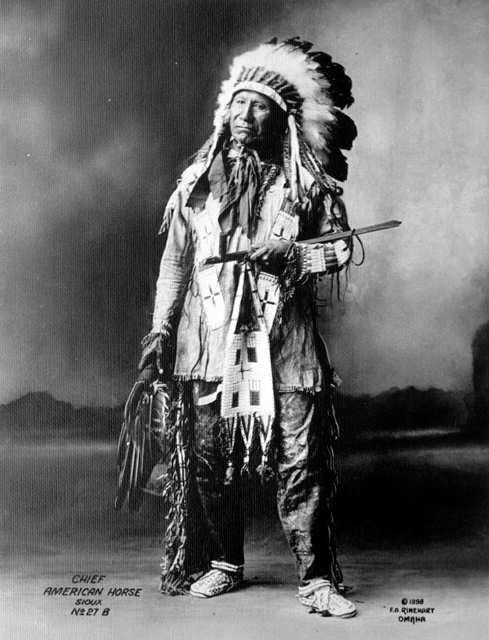
American Horse is a leader of the Lakotas Oglalas tribe of the Sioux people. He was born in 1840 in South Dakota. This Native American marked the history of the United States, adviser of the army, he fought for the cordial understanding with the Whites and for the education of his people.
In 1870, American Horse moved to the Pine Ridge Reserve where he joined forces with the Wagluhe clan and became a scout for the US Army. Indian appreciated by whites, American Horse helps them fight Crazy Horse and Sitting Bull bosses.
In 1876, he was responsible for arresting an Indian called Sioux Jim, but a fight ensued and ended with the death of the latter. American Horse is also opposed to Crazy Horse, which he considers too extreme about his vision of the white man, and considers it a bulwark in negotiations with Washington.
In addition to its collaboration with the settlers, American Horse stood out for its struggle to improve the living conditions of its people. Master of the repartee, he gave an incredible speech in 1891 in Washington to condemn the Wounded Knee massacre. American Horse is also a historian, he is the author of a winter tale tracing the history of his tribe. He died in 1908 from a natural death in his Pine Ridge home.
Crazy Horse
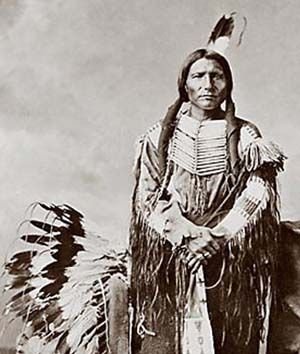
Crazy Horse is a member of the Oglala Lakotas of the Sioux people. He is one of the most emblematic leaders of the fight against settlers. Born around 1840 in South Dakota, he quickly became known as a mighty warrior.
Crazy Horse takes part in Red Cloud's fight against American soldiers who wish to occupy Sioux territory. He stands out with his audacity, and manages to attract 80 members of the army in an ambush. This is one of the worst defeats of Americans in the Great Western Plains.
The soldiers are resigned to signing the Fort Laramie Treaty with the Indian chiefs, but Crazy Horse and Sitting Bull do not adhere to it and continue to live as they wish outside the territory imposed on them.
In 1876, he participated in the Battle of Little Big Horn and mishandled the Americans. After the victory, however, he is forced to part with Sitting Bull to feed his horses, he moved to settle near the Rosebud River.
In 1877, Crazy Horse and his tribe find themselves surrounded by soldiers. Although he refuses to surrender, the chief is influenced by his people and goes to Fort Robinson in Nebraska. As it passes, thousands of Indians gather to sing in honor of his bravery. The circumstances of his death are confused, he was brought into a room of the fort to meet General Crook, but realizing that he was locked up, he would have tried to struggle, a soldier stabbing him with his bayonet.
Crazy Horse has become a true legend for the Amerindian people. Moreover, all the clichés of him would not be true, he would indeed always refused to be photographed by the whites. In 1948, the Indians responded to what they saw as a desecration of their land, in this case the construction of Mount Rushmore in the Black Hills, by carving a huge statue of the face of Crazy Horse.
See my post on Mount Rushmore
https://steemit.com/history/@lndesta120282/mount-rushmore-national-memorial
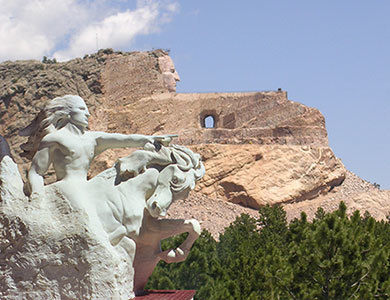
Big Foot
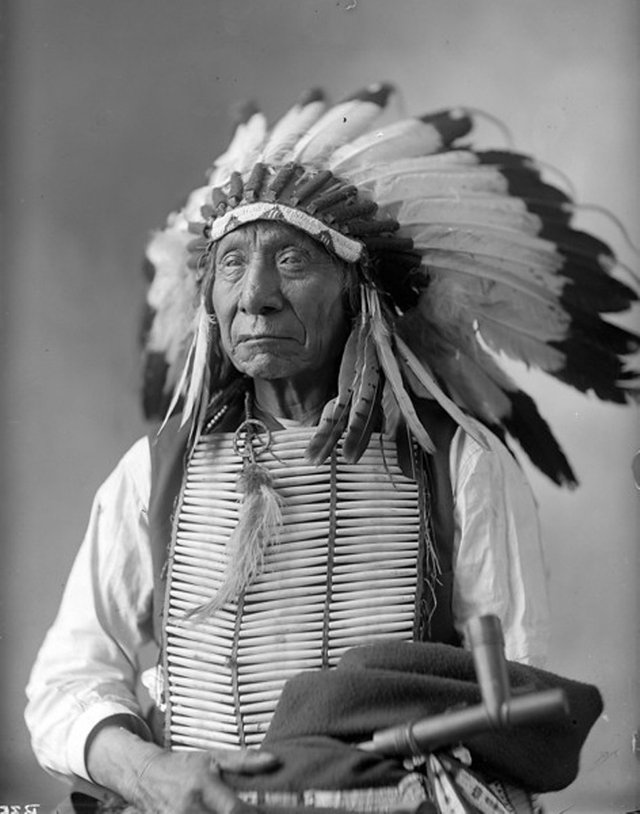
Born around 1826, Big Foot is chief of the Lakota tribe Miniconjous of the Sioux people. During his youth, he is renowned for his diplomacy, and avoids conflicts between rival tribes. In the 1870s, he joined Sitting Bull and Crazy Horse to fight the settlers.
In spite of their efforts and some victories, the leaders do not manage to gain the upper hand, Big Foot then asks his people to adapt to the way of life of the Americans while preserving its traditions. He moved to the Cheyenne River Reserve and traveled to Washington to build a school on the reserve.
In the middle of the winter of 1890, the living conditions in the reserve became so bad that Big Foot decided to walk 250 kilometers to another tribe led by Red Cloud. The American cavalry catches them on December 28th. Weakened, Big Foot prefers to go while he is in Wounded Knee.
During the disarming of the Indians, American soldiers opened fire and killed between 300 and 350 people, including Big Foot, before throwing them into the mass grave. This is the last massacre of the bloody conquest of the West.
Geronimo
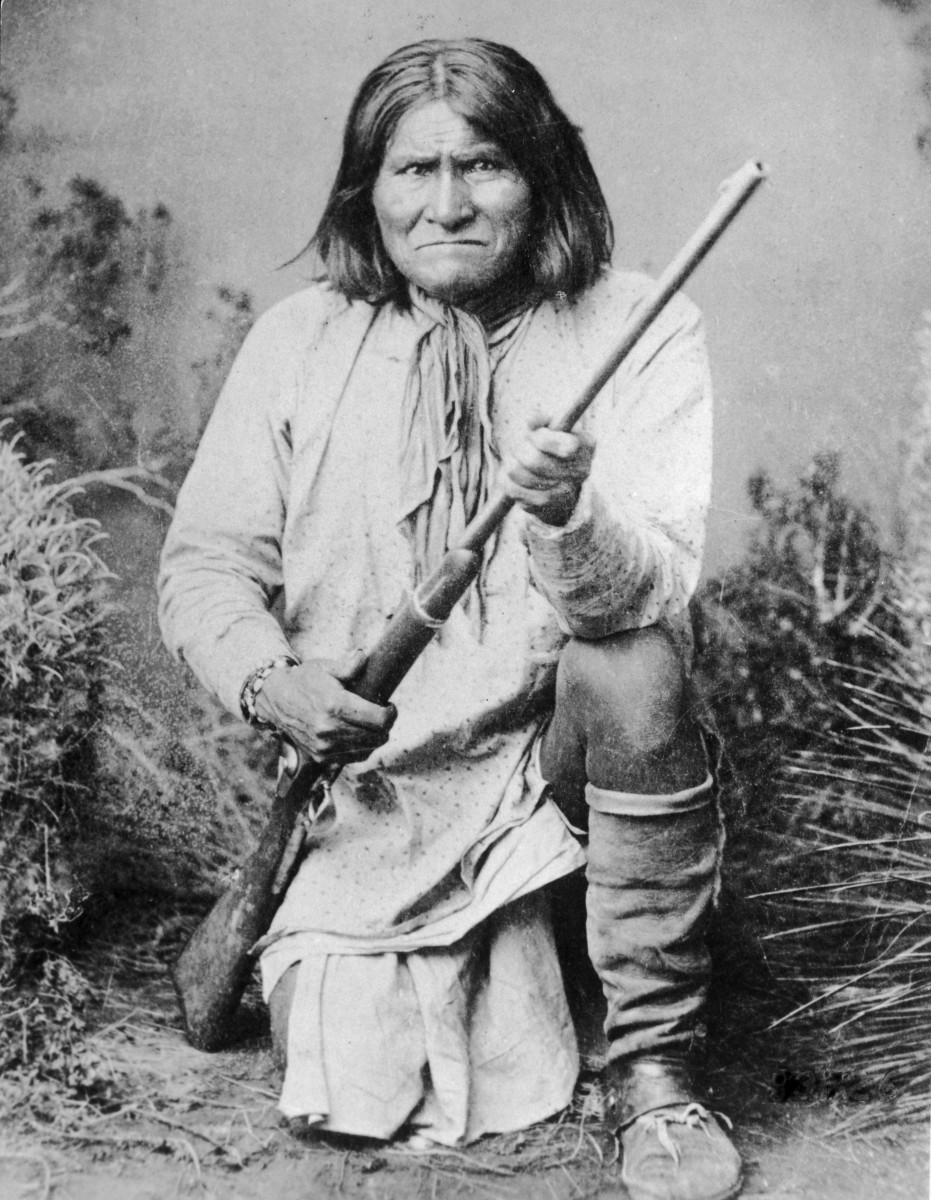
Geronimo is certainly one of the most emblematic Indians fighting for the freedom of his people. Born June 16, 1829, he is part of the Apache tribe Bendonkohe living in New Mexico, then under Mexican rule.
Geronimo is not a chef but a shaman, which gives him great respect. In 1858, his mother, wife, and three young children were brutally murdered by members of the Mexican army, an event that caused Geronimo to conduct punitive expeditions to Mexico.
In 1876, the Chiricahuas reserve, which he joined by alliance, was closed by the Americans who moved the Indians living there in another reserve called San Carlos. Deserted and arid, this place is disastrous for the future of the Apaches.
The shaman fled several times, sometimes with many women and children. He leads sometimes bloody raids against the settlers, but he goes every time. Geronimo is renowned for his ingenuity, his knowledge makes him an outstanding fighter, hence the many efforts of the US military to find him.
In 1886 he went for the last time. Tired of fighting, he is transported with members of his tribe to Florida, where the humid climate kills many of them who were accustomed to the desert drought.
In 1906, he dictates the story of his life and says he will always regret having surrendered. Geronimo died of pneumonia in 1909, his last wish being to be buried in his homeland.
I hope this article has more to you and has allowed you to know a little more about Native Americans.
Great post :) All that makes me think of the movie "the last of the mohicans", a great movie by the way, that I recommend!
It is their customs and traditions that they boast of a successful article
History is always interesting to read about. But then, how can we verify that this is what truly happened. I mean, none of us actually saw the war, nor can authenticate the information from our books. This makes me very sceptical most times. Great exposition anyways!
Good read! It's nice to know they're called Amerindians. Nice post!
this is great investing sir and thanks for sharing this, this is something new to me.
静怡
nice Post
Very good information, friend. Thank you or share it and make known briefly the essence of the true owners of the American lands. greetings.
I also like to read about history and anthropology of native populations.
we have so much to learn from them ... we have learned so much from them as religion, hypnosis, medicine and much more ...
yes you are right !
小甜甜
nice post :)